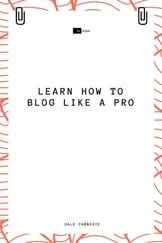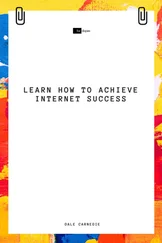2 Chapter 4Figure 4.1 Types of policy actors.Figure 4.2 BRT policy actors and actions.Figure 4.3 ‘Who told you about BRT?’.Figure 4.4 Details of South African municipal BRT-related study tours.Figure 4.5 Percent of respondents who went on a study...
3 Chapter 5Figure 5.1 Shekilango BRT Station, Dar es Salaam.Figure 5.2 Learning process across South African cities.
4 Chapter 6Figure 6.1 Horse-drawn tram in Johannesburg.Figure 6.2 Electric trams in Johannesburg.Figure 6.3 Knowledge of BRT adoption in South Africa.Figure 6.4 Exclusive curb lane on city streets.
1 Cover
2 Serious page
3 Title page
4 Copyright
5 Table of Contents
6 List of Figures
7 List of Abbreviations
8 Series Editors’ Preface
9 Acknowledgements
10 Begin Reading
11 Appendix A: Interview Schedule
12 Appendix B: Features of BRT systems in South Africa
13 References
14 Index
15 End User License Agreement
1 i
2 ii
3 iii
4 iv
5 v
6 vi
7 vii
8 viii
9 ix
10 x
11 xi
12 xii
13 xiii
14 xiv
15 1
16 2
17 3
18 4
19 5
20 6
21 7
22 8
23 9
24 10
25 11
26 12
27 13
28 14
29 15
30 16
31 17
32 18
33 19
34 20
35 21
36 22
37 23
38 24
39 25
40 26
41 27
42 28
43 29
44 30
45 31
46 32
47 33
48 34
49 35
50 36
51 37
52 38
53 39
54 40
55 41
56 42
57 43
58 44
59 45
60 46
61 47
62 48
63 49
64 50
65 51
66 52
67 53
68 54
69 55
70 56
71 57
72 58
73 59
74 60
75 61
76 62
77 63
78 64
79 65
80 66
81 67
82 68
83 69
84 70
85 71
86 72
87 73
88 74
89 75
90 76
91 77
92 78
93 79
94 80
95 81
96 82
97 83
98 84
99 85
100 86
101 87
102 88
103 89
104 90
105 91
106 92
107 93
108 94
109 95
110 96
111 97
112 98
113 99
114 100
115 101
116 102
117 103
118 104
119 105
120 106
121 107
122 108
123 109
124 110
125 111
126 112
127 113
128 114
129 115
130 116
131 117
132 118
133 119
134 120
135 121
136 122
137 123
138 124
139 125
140 126
141 127
142 128
143 129
144 130
145 131
146 132
147 133
148 134
149 135
150 136
151 137
152 138
153 139
154 140
155 141
156 142
157 143
158 144
159 145
160 146
161 147
162 148
163 149
164 150
165 151
166 152
167 153
168 154
169 155
170 156
171 157
172 158
173 159
174 160
175 161
176 162
177 163
178 164
179 165
180 166
181 167
182 168
183 169
184 170
185 171
186 172
187 173
188 174
189 175
190 176
191 177
192 178
193 179
194 180
195 181
196 182
197 183
198 184
199 185
200 186
201 187
202 188
203 189
204 190
205 191
206 192
207 193
208 194
Figure 3.1 Number of BRT systems opening annually
Figure 3.2 Map of BRT in South Africa
Figure 3.3 BRT adoption and implementation in South Africa
Figure 3.4 Fashion Square Rea Vaya station, Johannesburg
Figure 3.5 Lagoon Beach MyCiTi station, Cape Town
Figure 3.6 Map of A Re Yeng, Tshwane
Figure 3.7 Hatfield A Re Yeng station, Tshwane
Figure 3.8 Yarona station platform, Rustenburg
Figure 3.9 Features of BRT Systems in Cape Town and Johannesburg
Figure 3.10 Rea Vaya high-floor station, Johannesburg
Figure 3.11 Rea Vaya bus, Johannesburg
Figure 3.12 Rea Vaya bus lane, Johannesburg
Figure 3.13 MyCiTi bus lane, Cape Town
Figure 3.14 Map of the MyCiti, Cape Town
Figure 3.15 Map of Rea Vaya, Johannesburg
Figure 3.16 Modal split in South African cities
Figure 3.17 Public Transport Infrastructure and Systems Grant allocation
Figure 3.18 BRT in political cartoons
Figure 4.1 Types of policy actors
Figure 4.2 BRT policy actors
Figure 4.3 ‘Who told you about BRT?’
Figure 4.4 Details of South African municipal BRT-related study tours
Figure 4.5 Percent of respondents who went on a study tour to Bogotá
Figure 5.1 Shekilango BRT Station, Dar es Salaam
Figure 5.2 Learning process across South African cities
Figure 6.1 Horse-drawn tram in Johannesburg
Figure 6.2 Electric trams in Johannesburg
Figure 6.3 Knowledge of BRT adoption in South Africa
Figure 6.4 Exclusive curb lane on city streets
The RGS-IBG Book Series only publishes work of the highest international standing. Its emphasis is on distinctive new developments in human and physical geography, although it is also open to contributions from cognate disciplines whose interests overlap with those of geographers. The series places strong emphasis on theoretically informed and empirically strong texts. Reflecting the vibrant and diverse theoretical and empirical agendas that characterize the contemporary discipline, contributions are expected to inform, challenge and stimulate the reader. Overall, the RGS-IBG Book Series seeks to promote scholarly publications that leave an intellectual mark and change the way readers think about particular issues, methods or theories.
For details on how to submit a proposal please visit: www.rgsbookseries.com
Ruth Craggs, King’s College London, UK
Chih Yuan Woon, National University of Singapore
RGS-IBG Book Series Editors
David Featherstone
University of Glasgow, UK
RGS-IBG Book Series Editor (2015–2019)
This book is the outcome of more than a decade of research and it would be impossible to thank all those whose support has buoyed it.
To my interviewees in South Africa and those who gave me so many hours of their time, I hope this work provides support to continue improving urban life. This book captures and shares the story of BRT in South Africa, and provides a vital record of post-apartheid transformation. Many of the key figures named in this book have since left government, retired or otherwise moved on to new positions, taking their institutional memory with them. They risked their careers and their lives for a more equitable South Africa. Thank you for your bravery, dedication and candor.
I am indebted to my mentors at Newcastle University and UCL as well as Cardiff University, Royal Holloway University of London and London School of Economics for their feedback and encouragement. I am eternally grateful to Jenny Robinson and Andrew Harris whose insightful comments provided the roadmap throughout my learning process.
I am thankful to my friends and colleagues in Newcastle, London, Cape Town, Johannesburg, and around the world who offered feedback on journal articles, book chapters, conference presentations and grant proposals, as well as direction for how to navigate the academic netherworld.
A special thanks to the series editors Ruth Craggs, David Featherstone and Chih Yuan Woon for their careful engagement with the manuscript.
Читать дальше












